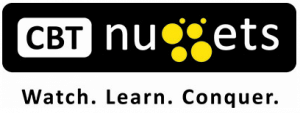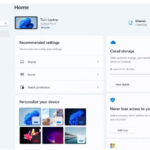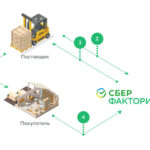Год выпуска: 2012
Производитель: CBT Nuggets
Автор: Anthony Sequeira
Продолжительность: 09:45:30
Тип раздаваемого материала: Видеоурок
Язык: Английский
Стоимость: 1999 рублей
Описание: Exam 70-236 retired Sept. 30, 2012. This training will get you up and running with Exchange Server 2007 quickly, minimizing headaches and maximizing your chance for success.
[wpspoiler name="Подробное описание" ]
1. Series Intro (00:09:30)
As Newman from Seinfeld says, When you control the mail, you control information! -- Well, as an Exchange admin get to control information. In this first nugget you get to know your instructor, J. Peter Bruzzese. He loves Seinfeld, he likes to write, and he likes to control information. He's the perfect person to teach you about Exchange. Plus in this nugget you'll learn what you'll cover through the rest of the series.
2. Introduction to Exchange 2007 (00:26:08)
This nugget explains how Exchange and Active Directory (AD) work together and lay the foundation for future nuggets that discuss preparation and installation of Exchange 2007. There is a discussion of Exchange Clients that can be used in Exchange 2007. It also explains the 5 new Server Roles: Mailbox Role, Client Access Server, Hub Transport Server, Edge Transport Server and Unified Messaging Server.
3. Preparing and Installing Exchange 2007 (00:29:30)
This nugget discusses the preparation needed within your AD infrastructure, including information about your Schema preparation (preparation switches) and permissions that need to be given to the correct individuals. For the official installation we discuss the hardware and software requirements to install Exchange 2007 on a particular server. And we walk through a stand-alone installation of Exchange 2007.
4. Managing Storage Groups and Databases (00:30:38)
This nugget focuses on the Mailbox Server role, providing an overview of storage architecture (including Storage Groups and Databases) using the Exchange Management Console and Exchange Management Shell.
5. Configure Public Folders (00:23:34)
In this nugget you'll learn to use Public Folders in an Exchange 2007 environment. It covers the steps to adding new folders through Outlook or the Exchange Management Shell, and explains how replicas are established for increased availability to your users of the public folder structure as well as a greater level of fault tolerance.
6. Managing Recipient Objects: Mailboxes (00:30:19)
This nugget discusses the many types of recipient objects that exist (mailbox users, mail-enabled groups, resource mailboxes, mail contacts, linked mailboxes, and more). The main focus in this nugget is the creation, configuration and management of the Mailbox recipient object. Moving mailboxes is also covered in this nugget.
7. Managing More Recipient Objects (00:35:02)
This nugget continues the theme of recipient object configuration and management -- with instructions on how to work with mail-enabled accounts, resource mailboxes (such as conference rooms and shared equipment) for the purpose of scheduling meeting requests, distribution groups, and linked mailboxes.
8. E-mail Policies, Accepted Domains and Address Lists (00:28:39)
This nugget addresses further Mailbox Server Role configuring by ensuring that you can establish e-mail policies for your organization. A discussion of accepted domains explains more complicated layouts for your Exchange organization, including authoritative domains and relay domains with multiple SMTP addresses. Finally, we discuss the Global Address List (GAL) and the creation of additional address lists for your organization.
9. Configuring Your Client Access Server (00:33:03)
In this nugget we discuss the Client Access Server (CAS) role in greater detail. We explain the configuration of Outlook Web Access for users who need to access their mailboxes through a browser, and ActiveSync for users with appropriate mobile devices. We discuss both server-side configuration and client-side connectivity.
10. Outlook Anywhere and POP/IMAP Configuration (00:27:45)
This nugget is the follow-up to the "Configuring Your Client Access Server" nugget. Its purpose is to walk through the server-side configuration for Outlook Anywhere and POP/IMAP. It also explains the client connectivity configuration that is necessary. The nugget also discusses the various CAS services such as Autodiscover, the Offline Address Book (OAB) and the Availability Service.
11. Configuring Disaster Recovery (00:33:50)
This nugget explains backup methodology and provides information on how to configure backups, recover messaging data, and recover server roles. There is also an important discussion regarding Recovery Storage Groups.
12. Configure High Availability (00:29:29)
This nugget explains the purpose of High Availability for your Exchange environment and reviews possible high availability scenarios for your Exchange mailbox server. The discussion includes an overview and demonstration of Local Continuous Replication (LCR) and Cluster Continuous Replication (CCR) with a review of Single Copy Clusters (SCC).
13. Understanding Message Transport (00:31:38)
This nugget describes the purpose of a Hub Transport Server and reviews the transport pipeline. This helps you understand what happens on your Exchange Servers behind the scenes when a message is sent within the organization, and to persons outside of the organization. The nugget also explains the function of Send/Receive SMTP Connectors and AD Site Connections to ensure mail is flowing in the direction you want it to.
14. Troubleshoot Message Transport (00:20:32)
This nugget reviews the use of the Mail Flow Tools, found in our Toolbox through the Exchange Management Console. These tools can be used for monitoring and troubleshooting and they include the following: Mail Flow Troubleshooter, Message Tracking, and Queue Viewer (to monitor mail queues). The nugget concludes with protocol logging for your SMTP Send/Receive connectors.
15. Configuring Your Edge Transport Role (00:26:04)
In this nugget we discuss the purpose of an Edge Transport server. You'll learn why you need to place this role on a stand-alone server at your network perimeter using Active Directory Application Mode (ADAM) for a directory database as opposed to Active Directory. We set up the connection between our Hub Transport and Edge Transport Servers through the EdgeSync process. This involves exporting the configuration from the Edge Transport Server and import it onto the Hub Transport Server. We also explain the need to secure the Edge Transport Server while still allowing necessary ports to be open for communication to take place. Finally, we review the use of the Security Configuration Wizard (SCW) to establish both the security and opening of needed ports.
16. Finalizing Edge Transport (00:19:00)
In this nugget we finalize the configuration of our Edge Transport Server by creating a postmaster mailbox, configuring our DNS (both public and private configuration was discussed and demonstrated) and reviewed briefly anti-spam/anti-virus needs, connectors, transport rules, accepted domains, and... the pièce de résistance... address re-writing.
17. Configuring Anti-Spam (00:31:02)
The anti-spam system includes a very intense process of filtering that we discuss step-by-step in this nugget. We review the configuration of all of the settings within the system on our Edge Transport Server. Then we review the possibility of establishing these same settings on our Hub Transport Server.
18. Analyze and Monitor Exchange 2007 (00:23:37)
In this nugget we look into all the best monitoring and reporting tools in Exchange 2007. This includes the Exchange Best Practices Analyzer, Disaster Recovery Tools (as well as the command-line tools ESEUTIL and ISINTEG), Performance Monitor and Troubleshooter, and the Microsoft Operations Manager (MOM).
19. A Look At Unified Messaging (00:30:25)
Although not an exam topic, per se, we complete our understanding of all five server roles with this discussion on Unified Messaging (UM). We review all of the necessary hardware requirements and telephony requirements to get UM up and running within your organization. Then we discuss the configuration of both the UM server and the UM clients.
20. Troubleshooting Your Exchange Environment (00:20:33)
This nugget establishes basic troubleshooting procedure for Exchange-related issues that may arise using Diagnostic Logging, the Exchange Troubleshooting Assistant and the Exchange Management Shell, including some key PowerShell cmdlets (like Test-) that will help you keep your Exchange environment up and running, as well as, help you on the exam.
21. Using PowerShell (00:24:01)
A great deal of the exam revolves around your knowledge of PowerShell. Not only the commands but navigation, pipelining, scripts and other concepts that revolve around the new command-line interface (CLI) from Microsoft. We need to become experts in PowerShell if we plan on passing this exam. This nugget helps you make sure you have developed a solid foundation, plus builds on what you already know by throwing in a few extra tips and tricks.
22. Skills Measured by Exam 70-236 (00:21:11)
In the final nugget we review all the exam oriented materials to assist you in your final preparations for Microsoft Exam 70-236: Exchange Server 2007, Configuring.
[/wpspoiler]



